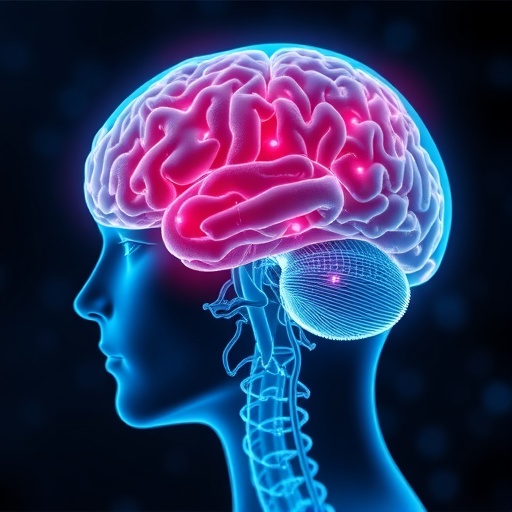In a groundbreaking study published in the Journal of Autism and Developmental Disorders, researchers have made significant strides in enhancing metaphor comprehension skills among children diagnosed with Autism Spectrum Disorder (ASD). This innovative research, led by Wei, Sun, and Liu, explores the use of story-based thinking maps, a novel educational technique aimed at fostering deeper cognitive understanding in children who often struggle with figurative language. The present findings suggest that metaphorical comprehension can improve dramatically when approached through structured visual aids that cater to the unique learning styles of children with ASD.
Metaphors are a vital part of communication, enriching language and thought processes. However, children with ASD frequently encounter difficulties in understanding these figurative expressions. Traditional teaching methods often fall short in addressing these challenges, leading to a pressing need for innovative strategies that engage and resonate with these learners. The researchers turned to the concept of thinking maps, which provide a visual framework that can help distill complex ideas into digestible formats, making it easier for children to grasp metaphorical content.
In the study, a diverse group of children with ASD participated in targeted interventions utilizing story-based thinking maps. These maps serve as a cognitive tool, visually representing the relationships between concepts in stories, which in turn assists in understanding underlying metaphors. The research highlights the importance of visual learning modalities for children on the autism spectrum—an area that remains underexplored within educational practices. The findings are promising, suggesting that combining storytelling and visual structuring can significantly elevate children’s engagement and comprehension levels.
The methodology of the research involved a systematic approach to testing various types of thinking maps tailored to suit the developmental levels of the participating children. An emphasis was placed on interactive storytelling, where children could actively engage with the narrative while using the thinking maps to outline and visualize their thoughts. This interaction not only helped to solidify their understanding of each metaphor but also enhanced their overall narrative skills. The researchers meticulously evaluated the children’s progress through a series of assessments focused on both comprehension and ability to generate their own metaphors.
Data gathered from the study revealed remarkable enhancements in metaphor comprehension skills among the participants. The empirical results showed that children were able to connect more abstract concepts through guided visualization—a vital component in metaphor use. Parents and educators reported noticeable improvements in the children’s confidence when expressing thoughts and ideas, a significant barrier for many children on the spectrum. Such advancements indicate the potential for thinking maps not only to facilitate learning but also to bolster social communication skills, a crucial area of development for children with ASD.
Furthermore, the study explored the adaptability of story-based thinking maps beyond metaphors. While the primary focus was on metaphor comprehension, preliminary findings suggest that these tools could also aid in understanding idiomatic expressions and other nuanced features of language. The versatility of thinking maps offers a promising avenue for broader applications in language arts curricula for children with diverse learning needs, providing educators with a dynamic method for teaching complex language concepts.
Understanding the importance of continued research in this field, the authors noted that future studies should aim to expand on the sample size and diversify participant demographics. By incorporating varying age ranges and levels of cognitive functioning, researchers can further refine interventions and make substantial advancements in teaching strategies tailored for children with ASD. The importance of collaborative efforts between educators, therapists, and researchers was emphasized as key to developing integrated approaches that can positively impact children’s learning experiences.
In the digital age, where technology plays a pivotal role in educational strategies, the integration of such thinking maps through digital platforms could revolutionize how children with ASD interact with language. Digital thinking maps could provide interactive features, enhancing engagement and allowing for real-time feedback. Such technological advancements could potentially engage children in a manner that traditional methods have not, bridging the gap between learning and enjoyment.
The implications of this research extend beyond metaphor comprehension; they touch on the essential relationship between language mastery and social competence. With improved skills in understanding metaphorical language, children with ASD may find it easier to navigate social interactions that require nuanced understanding. This presents opportunities not only for academic improvements but also for fostering deeper social connections, enhancing the quality of life for these individuals.
In summary, the research conducted by Wei, Sun, and Liu highlights the transformative potential of story-based thinking maps as a means to bridge the gap in metaphor comprehension among children with Autism Spectrum Disorder. By adopting innovative educational practices that honor the unique cognitive profiles of these children, the field of special education stands to gain immensely. The study proposes a compelling case for the adoption of such strategies in classrooms and therapy sessions, calling for educators and practitioners to embrace these methods to optimize learning outcomes for children on the autism spectrum.
As we look ahead, it becomes increasingly clear that multidisciplinary approaches combining psychology, education, and technology will play a vital role in shaping future interventions for children with ASD. The promising results of this study not only suggest better comprehension of language but also pave the way for richer, more meaningful educational journeys that empower children with ASD to thrive.
Subject of Research: Enhancing metaphor comprehension skills in children with Autism Spectrum Disorder using story-based thinking maps.
Article Title: Using Story-Based Thinking Maps to Enhance Metaphor Comprehension Skills in Children With Autism Spectrum Disorder
Article References:
Wei, S., Sun, Y., Liu, G. et al. Using Story-Based Thinking Maps to Enhance Metaphor Comprehension Skills in Children With Autism Spectrum Disorder.
J Autism Dev Disord (2025). https://doi.org/10.1007/s10803-025-07142-x
Image Credits: AI Generated
DOI: https://doi.org/10.1007/s10803-025-07142-x
Keywords: Autism Spectrum Disorder, metaphor comprehension, story-based thinking maps, educational strategies, cognitive development.
Tags: challenges of metaphor understanding in autismcognitive tools for children with autismenhancing metaphor comprehension in children with autismfigurative language understanding in ASDimproving communication skills in children with autisminnovative educational strategies for autismresearch on autism and metaphor comprehensionstory-based thinking maps for ASDstructured learning techniques for ASDteaching metaphors to autistic childrenvisual aids for metaphor comprehensionvisual learning strategies for autism spectrum disorder





